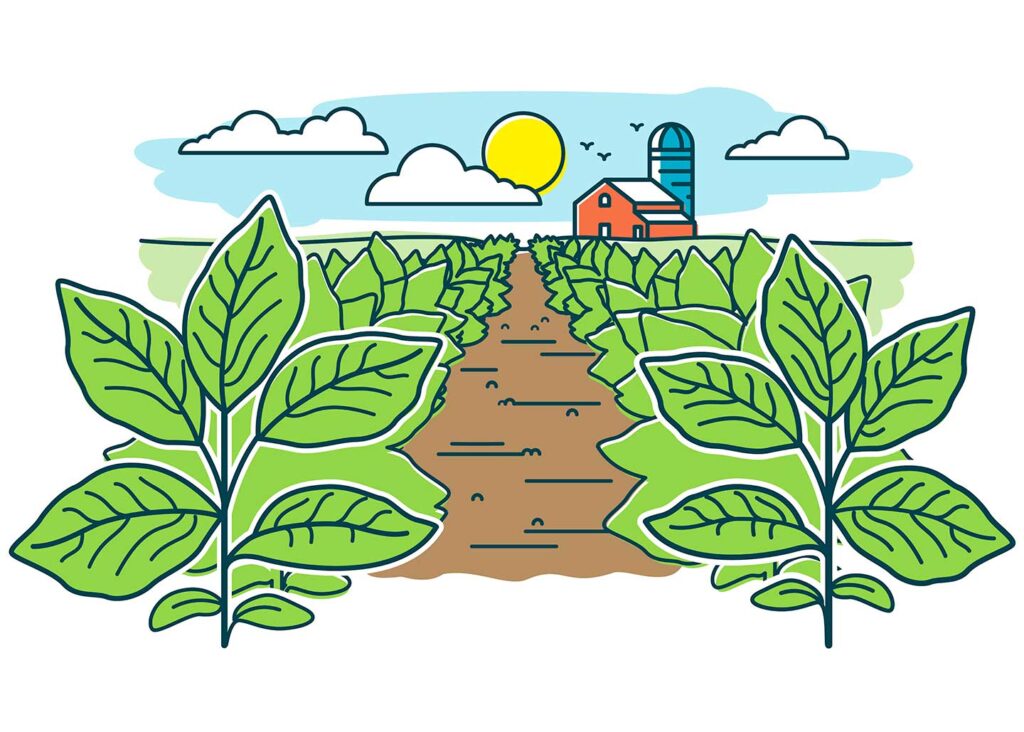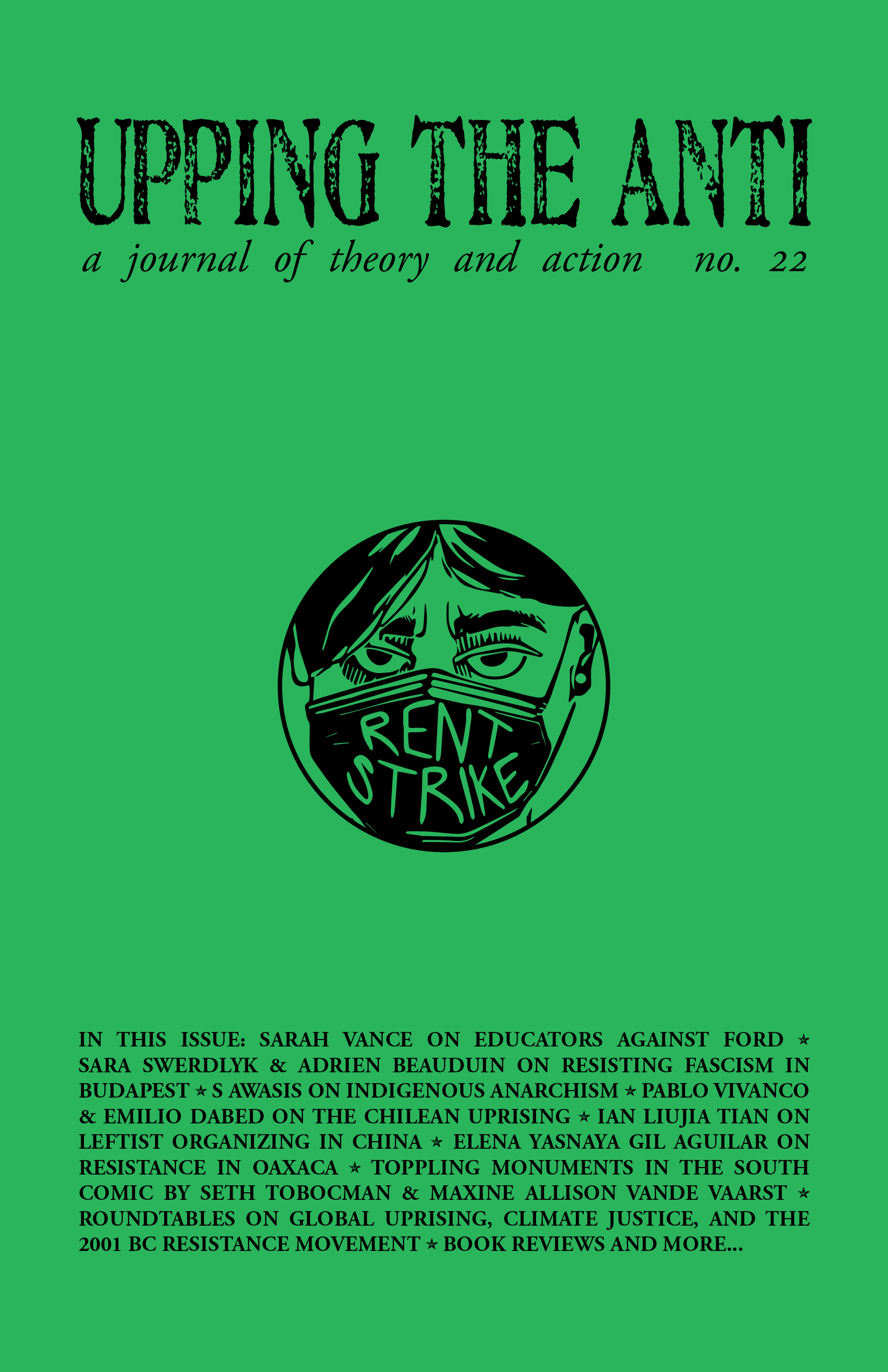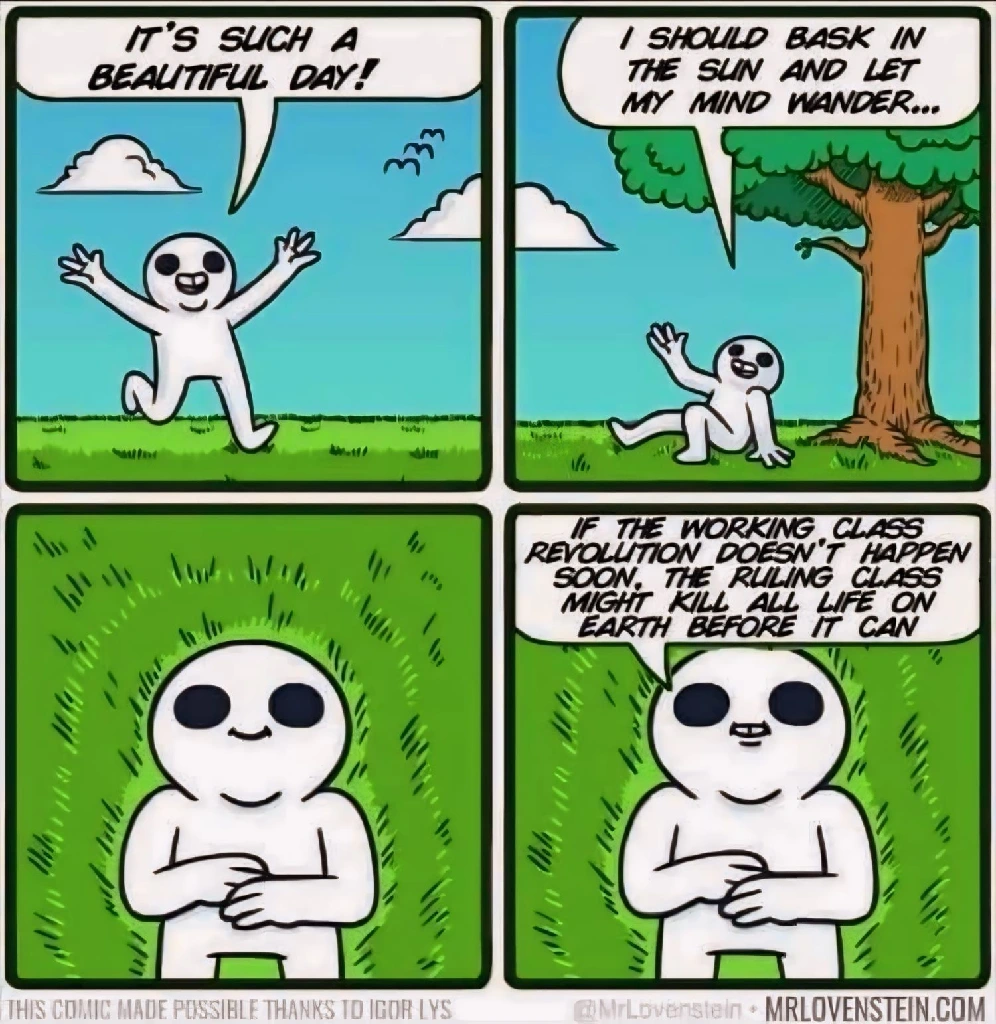Earthling Liberation notes
The production of meat and other animal-sourced foods, especially in their industrialized form, entails significant exploitation of animals, labor, and the natural environment. However, concern with animals is often sidelined in left and progressive politics, and veganism is often derided by leftists as a liberal project. Many contend that veganism is fixated on consumerism, asceticism, identity, and deontological ethics, and is insensitive to the oppressions perpetrated by Western, capitalist epistemologies and economic structures. Responding to these charges, this article argues that veganism conceived as a boycott aligns with existing Left commitments to social and environmental justice, and also those concomitant with a trans-species anti-exploitation ethic. The authors elaborate a specific definition of veganism as a boycott, situate it as a tactic within the broader political horizon of total liberation – schematized as a three-tier model for political action – and explain why it offers an effective form of eroding capitalism and other systems of domination. The authors conclude that refusing to consume animal products has tangible economic and social impacts, increases solidarity between human and nonhuman populations, and sensitizes individuals and communities to the socio-political effects of their consumer behavior. Jonathan Dickstein, Jan Dutkiewicz, Jishnu Guha-Majumdar & Drew Robert Winter (2022) Veganism as Left Praxis, Capitalism Nature Socialism, 33:3, 56-75, DOI: 10.1080/10455752.2020.1837895
>Humans as Agents in the Termination of the African Humid Period >There is great uncertainty over the timing and magnitude of the termination of the African Humid Period (AHP). Spanning from the early to middle Holocene, the AHP was a period of enhanced moisture over most of northern and eastern Africa. However, beginning 8000 years ago the moisture balance shifted due to changing orbital precession and vegetation feedbacks. Some proxy records indicate a rapid transition from wet to dry conditions, while others indicate a more gradual changeover. Heretofore, humans have been viewed as passive agents in the termination of the AHP, responding to changing climatic conditions by adopting animal husbandry and spreading an agricultural lifestyle across the African continent. This paper explores scenarios whereby humans could be viewed as active agents in landscape denudation. During the period when agriculture was adopted in northern Africa, the regions where it was occurring were at the precipice of ecological regime shifts. Pastoralism, in particular, is argued to enhance devegetation and regime shifts in unbalanced ecosystems. Threshold crossing events were documented in the historical records of New Zealand and western North America due to the introduction of livestock. In looking at temporally correlated archeological and paleoenvironmental records of northern Africa, similar landscape dynamics from the historical precedents are observed: reduction in net primary productivity, homogenization of the flora, transformation of the landscape into a shrub-dominated biozone, and increasing xerophylic vegetation overall. Although human agents are not seen as the only forces inducing regime change during the termination of the AHP, their potential role in inducing large-scale landscape change must be properly contextualized against other global occurrences of neolithization. https://www.frontiersin.org/journals/earth-science/articles/10.3389/feart.2017.00004/full
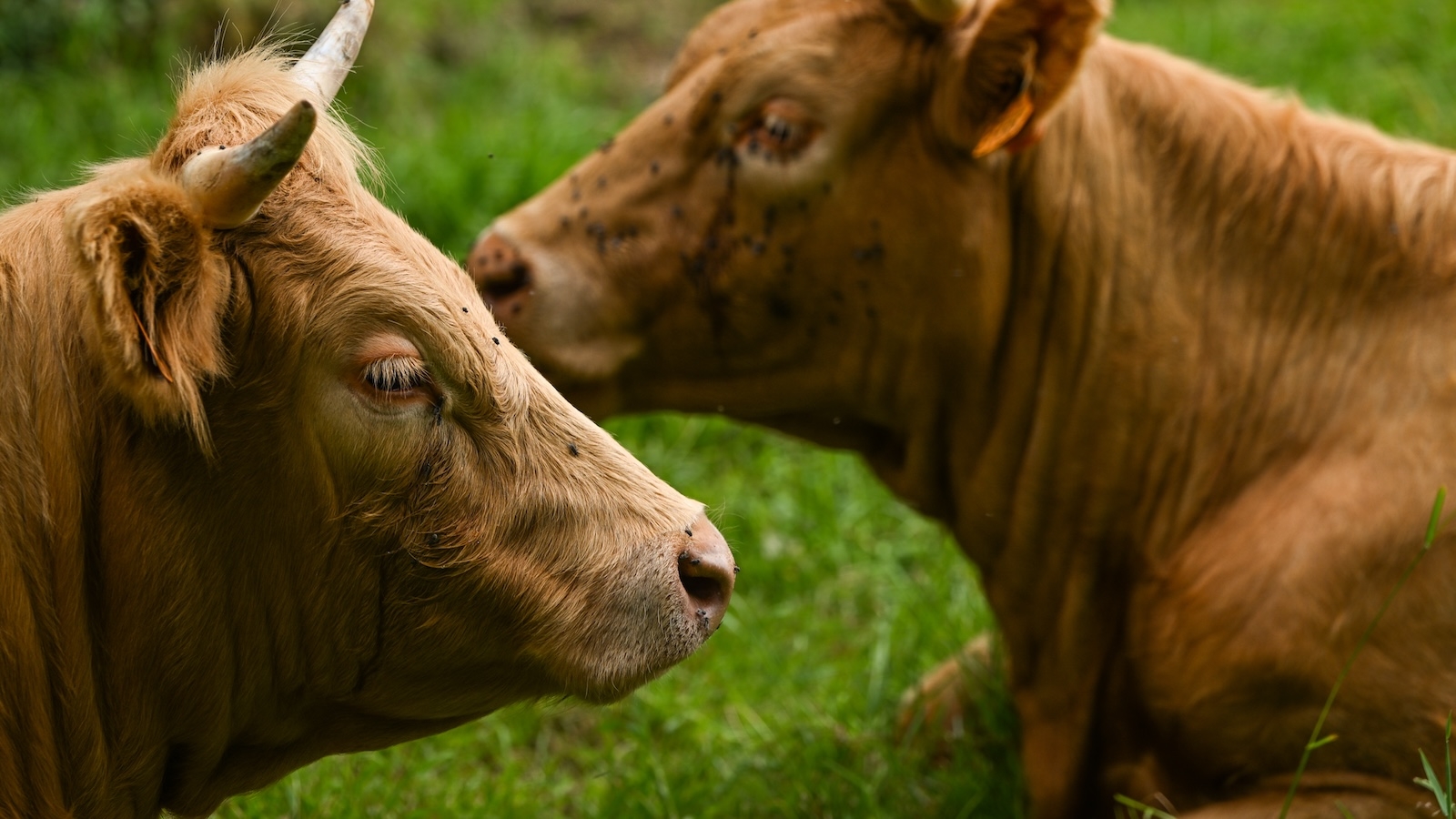 grist.org
grist.org
cross-posted from: https://sh.itjust.works/post/25282575 > >Methane spends a lot less time in the atmosphere than carbon dioxide; about 20 years after it’s released, most of it will have decayed, while carbon dioxide lingers in the atmosphere for hundreds of years. But methane also generates heat much more readily than carbon dioxide — about 80 times more in its first 20 years in the atmosphere — meaning it contributes significantly towards global warming in the short term. It is good news — sort of — because by the same token, any reductions in methane emissions will have more of an impact on the climate right away.
>Humans regularly engage in efficient communicative conversations, which serve to socially align individuals1 . In conversations, we take fast-paced turns using a human-universal structure of deploying and receiving signals which shows consistent timing across cultures2 . We report here that chimpanzees also engage in rapid signal-to-signal turn-taking during face-to-face gestural exchanges with a similar average latency between turns to that of human conversation. This correspondence between human and chimpanzee face-to-face communication points to shared underlying rules in communication. These structures could be derived from shared ancestral mechanisms or convergent strategies that enhance coordinated interactions or manage competition for communicative ‘space’.
cross-posted from: https://vegantheoryclub.org/post/246039 > Direct link to zine pdf https://warzonedistro.noblogs.org/files/2024/07/Sindre_Vegan_Support_Zine.pdf > > Warzone Distro is the distributor/publisher, Unoffensive Animal is the zine that did the interview
[Repeated plague infections across six generations of Neolithic Farmers | Nature](https://www.nature.com/articles/s41586-024-07651-2)
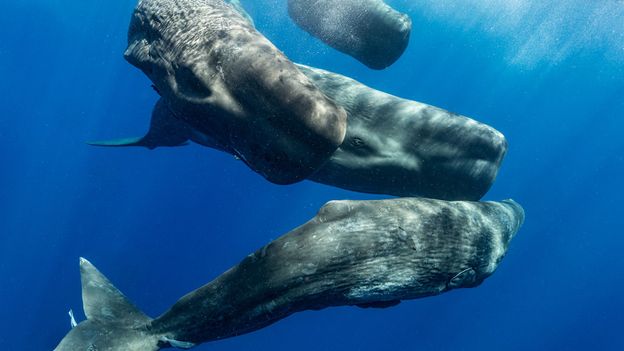 www.bbc.com
www.bbc.com
cross-posted from: https://lemmy.ca/post/24849958 > Sperm whales communicate with each other using rhythmic sequences of clicks, called codas. It was previously thought that sperm whales had just 21 coda types. However, after studying almost 9,000 recordings, the Ceti researchers identified 156 distinct codas. They also noticed the basic building blocks of these codas which they describe as a "sperm whale phonetic alphabet" – much like phonemes, the units of sound in human language which combine to form words. > > Pratyusha Sharma, a PhD student at MIT and lead author of the study, describes the "fine-grain changes" in vocalisations the AI identified. Each coda consists of between three and 40 rapid-fire clicks. The sperm whales were found to vary the overall speed, or the "tempo", of the codas, as well as to speed up and slow down during the delivery of a coda, in other words, making it "rubato". Sometimes they added an extra click at the end of a coda, akin, says Sharma, to "ornamentation" in music. These subtle variations, she says, suggest sperm whale vocalisations could carry a much richer amount of information than previously thought.
 metamoderna.org
metamoderna.org
> ## 33 Holocausts per Year > > We all know that tormenting a cat or a dog is a pretty bad thing. Indeed, we regard it as criminal, highly immoral, and certainly as picking on someone weaker than ourselves. There’s little doubt for anybody who’s known an animals that they have real sensations, real discomfort, and—in a meaningful sense—feelings. Darwin studied this in considerable detail [already in the 1860–70s](https://blogs.scientificamerican.com/observations/the-evolution-of-emotion-charles-darwins-little-known-psychology-experiment/#:~:text=In%201872%2C%20Darwin%20published%20The%20Expression%20of%20the,cultures%20and%20species%E2%80%94an%20unpopular%20view%20at%20the%20time.). > > Now, still, maybe it’s even worse to torment a little kid or an old lady than being cruel to a cat? Who knows at the end of the day? Let’s say then, to remain on the safe side of the argument (so we don’t make ourselves any kinder than we really have to!) that tormenting *two* little dogs and killing them is about as bad as whacking an old lady. > > Nah, still don’t feel quite safe. Maybe we’re still giving the dogs too much slack. Make it three dogs. > > Hmm. No. The suffering of one HUMAN BEING must surely be worth more than three pesky mongrels, no? Make it five. > > Ten. Let’s say I torment and kill ten dogs, slowly, one by one. Is that about as bad as whacking that old lady? > > Still doesn’t feel right. How about a hundred dogs? And a few cats crushed under car wheels for good measure. > > No, no—let’s be serious about this. Let’s take *one thousand* dogs, each of which has a family of people and others who care about them, lock ’em up, starve them, make them work hard, humiliate them, and then gas them to death. Let’s make that count as the life of ONE human person. > > Admittedly, this is a pretty speciesist and supremacist position. We cannot exactly account for why one of us humans should be worth literally a thousand dogs. But let’s just go with it, as we all have a strong feeling that a human life is something so much more than the life of a non-human animal. Maybe even a thousand ones. Most of all—let’s just remain really on the safe side that we shouldn’t be *any* kinder to animals than we absolutely have to by a bare minimum of decency and ethics. A bare minimum. We don’t want to overburden ourselves, do we? We need to be kind to *ourselves*, not too harsh, when it comes to how kind we should be to others, right? > > So, a thousand it is. I, Hanzi Freinacht, hereby proclaim that I am literally worth one thousand (1,000) of those dirty mongrels. I am human. Let my supremacy be known. > > Now, this leaves us with a multiplier of 1000 when it comes to comparing crimes against humanity to crimes against “non-humanity” of animals roughly comparable to dogs (we don’t know how *sentient* different animals are, but we can gauge their intelligence to be above that of human babies or toddlers). > > Let us then consider how many land animals the global market “produces” per year—i.e., basically keeps in death camps—to the scale of the worst crime against humanity that we can think of: the Holocaust. > > \[***Note before we go on****: Far-right apologists and Nazis have long used the trick of comparing human suffering to animal suffering while granting greater rights to the latter as a way of relativizing the plights of targeted ethnicities, who in turn are then compared to animals. The gap is thereby narrowed from both sides and atrocities become less unthinkable. I will have no such accusations cast against me for the comparison below: I am doing the exact opposite, namely using the profound seriousness of human suffering as a starting point for expanding our circle of care to other beings. The crooks are whoever become the apologists for crimes, not the ones who seek to prevent crimes from being committed.*\] > > Over the course of this event, the Nazis imprisoned, tormented, and killed about 6 million people over a period of five years (1941–45), so about 1.2 million per year on average (6/5 is 1.2). Or that is the relevant figure for what is usually referred to as Holocaust—the number of people killed under similar murder campaigns in Nazi Germany is around 12 million. But for the word “Holocaust” itself, 1.2 million per year is roughly correct. > > Our global non-human animal industry subjects about 60 *billion* land animals to a comparable fate per year. Now, let us remember that these are “just animals” right? So let’s apply the 1000 multiplier. They’re just worth a thousandth of one of us! > > That lands us, with this conservative estimate of the worth of non-human animal life, at 60 million. Per year. Not over five years. > > Divide 60m by 1.2m to see how this compares to the Holocaust’s yearly effects— and you get a rather grim number: 50. > > Our current global consumption of land animals causes: **Fifty (50) ongoing Holocausts per year.** > > The animal industry is not, of course, 50 times worse than the Holocaust. That would be a great under-estimation of the severity of our crimes against non-humanity. > > We must not forget that the Holocaust lasted only 5 years, whereas our animal megacide goes on year after year, decade after decade, and does not exhaust its killing fields. > > Oh, and that’s just the land animals. Aquatic animals account for an estimated over 1 *trillion* kills yearly (many of which are cruel and slow deaths). Yes, that involves a lot of fish, so let’s give ourselves a yet higher ethical premium: 10,000 non-human aquatic animals for just *me*! > > So, if you divide one trillion by 10,000 (including a few seal cubs and dolphins for good measure, death to them!) you get… 100 million. > > 100 million plus 60 million, divided by 1.2… produces… > > **133 Holocausts per year. Every year. And still growing.** > > This is if, and only if, I am worth one thousand dogs or cats or chickens or cows or pigs—or ten thousand sea and water animals of various sorts. > > Phew, okay. Why am I saying this? It’s not really news to anyone, is it? It’s just to set the premise for what follows: This issue matters a lot. It’s well known that we all become less empathic, not more, when faced with large numbers. But as you may have noticed, I am not speaking to your feelings so much right now, but just to common sense, just to plain reason. It’s just weird to deny that this is a thing. > > Even if you don’t care about animals and only have a shrugging “well, we shouldn’t be unnecessarily cruel…” then you can hardly write the issue off as insignificant. It still matters. > > It’s not about your damned personal choice to eat what you feel like. It’s not about puritanism or scoring cheap moral shots. It’s not about crazy people on YouTube feeding their babies grass smoothies and sporting toothless smiles. It’s not about shame or guilt. It’s not about feeling hopeless or depressed. > > It’s about, with a very conservative estimate, 133 Holocausts per year. Every year. Decades on end. And growing. So don’t make it about yourself. > > 133 Holocausts per year—and that’s when I also used excessively conservative estimates of the number of animals killed. On what planet, in what barbaric dark age, is this considered to be okay and entirely normal? > > Answer: On planet Earth, right about this minute. > > Breathe it in. The numbers don’t land in our minds, they cannot. But we can all understand the concept of a staggering moral mountain to climb: a heroic struggle against what is just not right.
> The marker approach is taken as best practice for answering the *distribution question*: Which animals are conscious? However, the methodology can be used to increase confidence in animals many presume to be unconscious, including *C. elegans*, leading to a trilemma: accept the worms as conscious; reject the specific markers; or reject the marker methodology for answering the distribution question. I defend the third option and argue that answering the distribution question requires a secure theory of consciousness. Accepting the hypothesis *all animals are conscious* will promote research leading to secure theory, which is needed to create reliable consciousness tests for animals and AIs. Rather than asking the distribution question, we should shift to the *dimensions question*: How are animals conscious?
>Scientists and environmental organizations around the world urge a shift toward plant-based foods as one of the most impactful actions we can take to reduce climate destruction and improve our health. >That’s why we created the Climate-Friendly Food Guide to provide more details, recipes, tips, and resources. There's a PDF version there too.
 www.dw.com
www.dw.com
cross-posted from: https://lemmy.world/post/16280962 > _Conspiracy theorists are trying to influence European election campaigns with disinformation and lies. **Much of the fabrication comes from Moscow, but plenty is homegrown**._ > > If media campaigns in more than a dozen European countries [were to be believed](https://www.dw.com/en/fact-check-why-do-we-believe-fake-news/a-66102618), the European Union (EU) intends to force citizens to eat insects instead of meat. > > The claim has touched nerves, especially in Italy, where variations of it have been revived and splashed across billboards during [European elections](https://www.dw.com/en/eu-elections-350-million-voters-to-choose-new-parliament/a-69268173) to pit Brussels against mama's special sauce. > > But [consumers of this claim](https://akademie.dw.com/en/disinformation-people-arent-as-gullible-as-we-think/a-67774216 "External link — consumers of this claim") are being fed pure nonsense, an example of countless fabrications launched or adopted by candidates seeking political gain at the cost of the truth. > > The fake insect-food narrative, which first surfaced last year in a number of EU countries, **has proven so popular with malign actors both within and outside the bloc** that they've brought it back for the [European election](https://www.dw.com/en/eu-elections-2024/t-68049956) cycle to try to discredit pro-EU candidates. > > … > > But no one should be surprised that [malignant actors want to impact Europe's election cycle](https://www.dw.com/en/fact-check-how-to-spot-fake-news-ahead-of-eu-elections/a-69046888), **with 720 seats up for grabs for the next five-year term in the European Parliament and many national elections taking place simultaneously as part of a record year for elections worldwide**. > > The EDMO reports a record-high amount of disinformation ahead of the vote about universally controversial issues like **migration, agricultural policy and climate change, including even the resurrection of fake stories from years past, such as** [COVID-19 conspiracies](https://www.dw.com/en/fact-check-conspiracy-theories-about-the-pandemic-treaty/a-65982226).
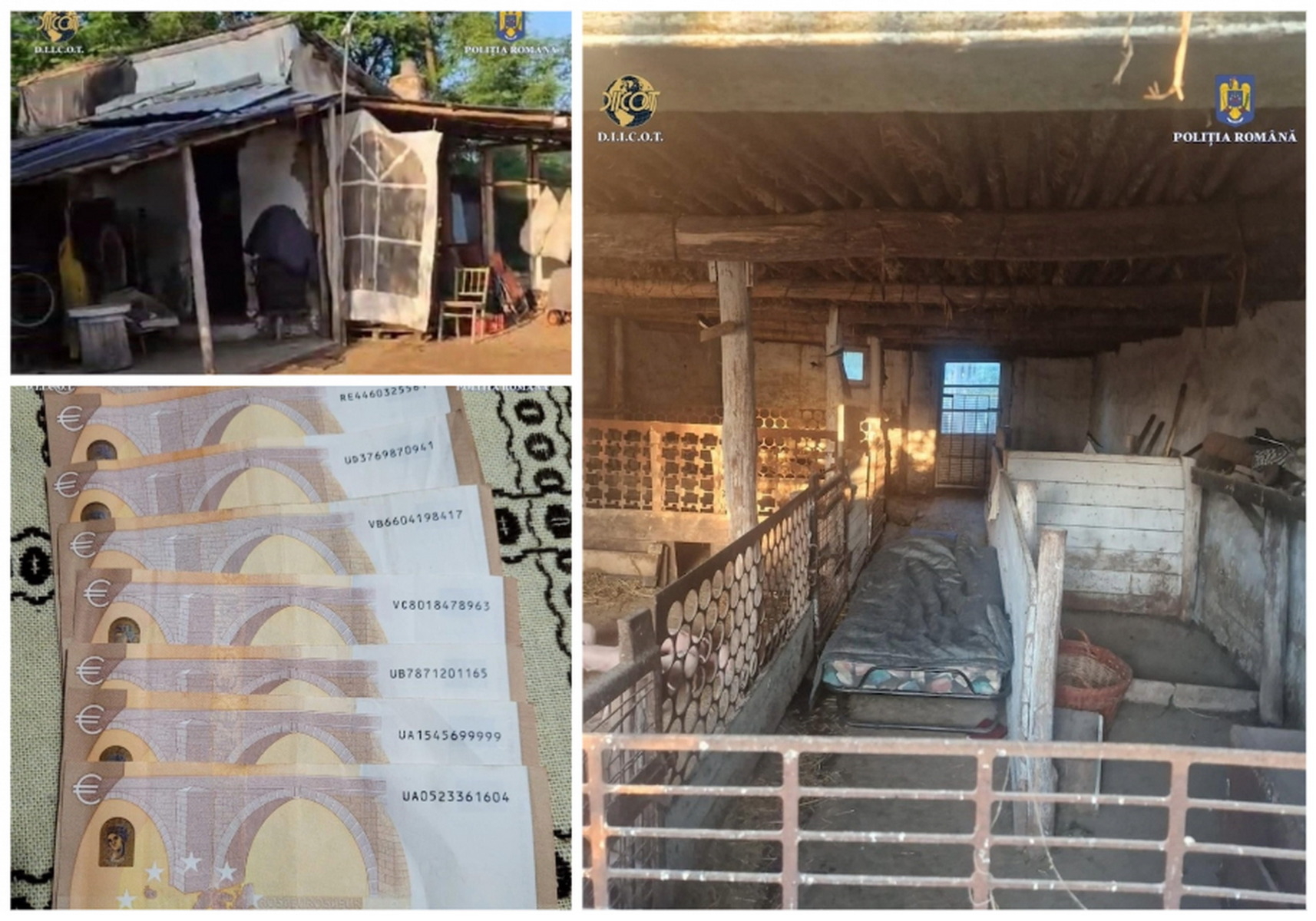 www.g4media.ro
www.g4media.ro
Victim: - homeless - mental problems - 13 years of slavery - live in average rural animal shelter (horrid shack) Slavers: - old couple  This kind of news pops up every year. >"Taking advantage of his vulnerable situation, the two would have accommodated him in inappropriate conditions, at the animal farm they own in the vicinity of the town of Valea lui Mihai. Here, he would have exploited him through daily work, subjecting him to repeated physical violence and degrading treatment," the prosecutors said.
cross-posted from: https://lemmy.world/post/15823220 > >### Four parties hammer out agreement filled with bad news for scientists > > ------------- > > >The nationalist, populist Party for Freedom, led by Geert Wilders, won 23% of the vote in the November 2023 House elections, putting Wilders—once a fringe figure who proposed a “head rag tax” on women wearing headscarves—close to the center of power. Since then, Wilders has been in contentious and often chaotic negotiations to form a government with three other parties, including the center-right party led by outgoing Prime Minister Mark Rutte, which saw its electoral share shrink to 15%. The governing plan endorsed by the four parties, which marks a crucial step in forming a new government, includes a series of harsh anti-immigration measures. Centrist and left-wing parties fiercely criticized the plan during this week’s debate. > > -------------- > > >Another sharp turn comes in environmental policy. The Netherlands, a major agricultural exporter, has more farm animals per square kilometer than any other country in Europe, and their waste emits high levels of nitrogen compounds that violate EU rules and harm the country’s ecosystems. Past government plans to tackle the issue have triggered massive protests by farmers and the rise of a new party, the Farmer-Citizen Movement, that won 4.7% of the vote and is part of the new coalition. > >
>### The CDC is locked in a power struggle with key states and agriculture players as it tries to better track the virus and prevent another potential pandemic. --------- >Many farmers don’t want federal health officials on their property. State agriculture officials worry the federal response is sidelining animal health experts at the Agriculture Department, and also that some potential federal interventions threaten to hinder state and local health officials rushing to respond to the outbreaks. ------------ >A big reason for the resistance: Farms don’t want to be identified publicly as potential hotspots for the virus, nor do they want to draw scrutiny to their workers, a significant proportion of whom are undocumented immigrants and fearful of government officials.
 www.theatlantic.com
www.theatlantic.com
https://www.humanehoax.org/ for context 
 sentientmedia.org
sentientmedia.org
https://fishfeel.org/







